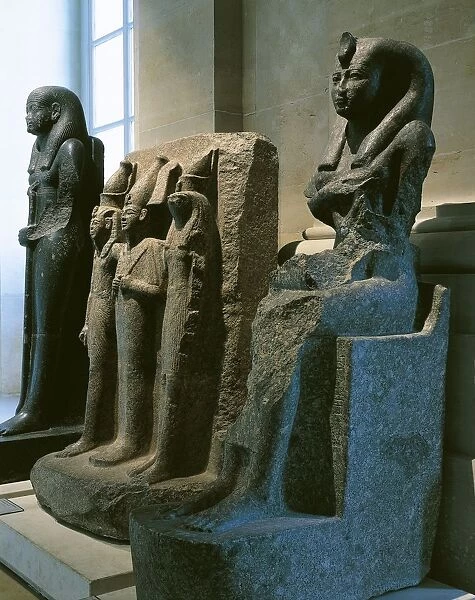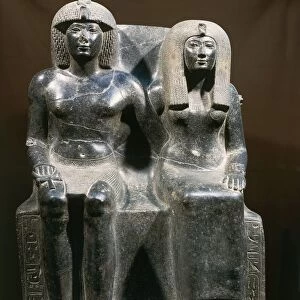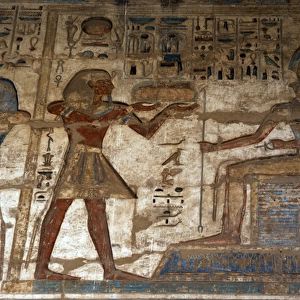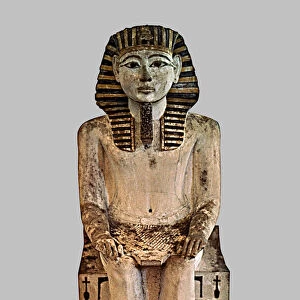Rights Managed > Universal Images Group (UIG) > Art > Archeology
Ancient Egyptian statues representing Isis breast-feeding triad of pharao among Osiris, Horus and Nephthys
Filename: 940_18_98010713.jpg
Size: 2793 x 3521 (2.9MB)
Date: 13th March 2014
Source: Universal Images Group (UIG)
Source: De Agostini Picture Library
![]()

Wall Art and Photo Gifts from Universal Images Group (UIG)
Ancient Egyptian statues representing Isis breast-feeding triad of pharao among Osiris, Horus and Nephthys
France - Ile-de-France - Paris. Louvre Museum. Egyptian antiquities rooms, room 12. Statues representing Isis breast-feeding a triad of Pharaoh among Osiris, Horus and Nephthys
Universal Images Group (UIG) manages distribution for many leading specialist agencies worldwide
Media ID 9510603
Ancient Egyptian Culture Archeology Damaged Female Likeness Horus In A Row Nephthys Stone Three Objects Pharao
EDITORS COMMENTS
This print showcases the ancient Egyptian statues representing Isis breast-feeding a triad of Pharaoh among Osiris, Horus, and Nephthys. Located in the Louvre Museum's Egyptian antiquities rooms in Paris, France, these sculptures are a testament to the rich history and artistry of ancient Egypt. Despite some damage over time, these stone sculptures still exude an undeniable sense of grandeur. Standing tall and vertical in a row, they depict male and female likenesses with remarkable detail. The three objects symbolize the divine connection between Isis as she nourishes her son Horus alongside Osiris and Nephthys. Stepping into this room feels like stepping back in time; it is an immersive experience that transports visitors to the heart of ancient Egyptian culture. With no people present in this photograph, one can truly appreciate the craftsmanship behind these magnificent works of art. The significance of this triad lies not only in its artistic beauty but also in its historical importance. It serves as a reminder of Egypt's glorious past and offers glimpses into their beliefs surrounding motherhood, royalty, and spirituality. As we admire this image captured by Universal Images Group (UIG), let us reflect on how these statues continue to fascinate archaeologists worldwide while preserving our collective human heritage for generations to come.
MADE IN THE USA
Safe Shipping with 30 Day Money Back Guarantee
FREE PERSONALISATION*
We are proud to offer a range of customisation features including Personalised Captions, Color Filters and Picture Zoom Tools
SECURE PAYMENTS
We happily accept a wide range of payment options so you can pay for the things you need in the way that is most convenient for you
* Options may vary by product and licensing agreement. Zoomed Pictures can be adjusted in the Cart.










